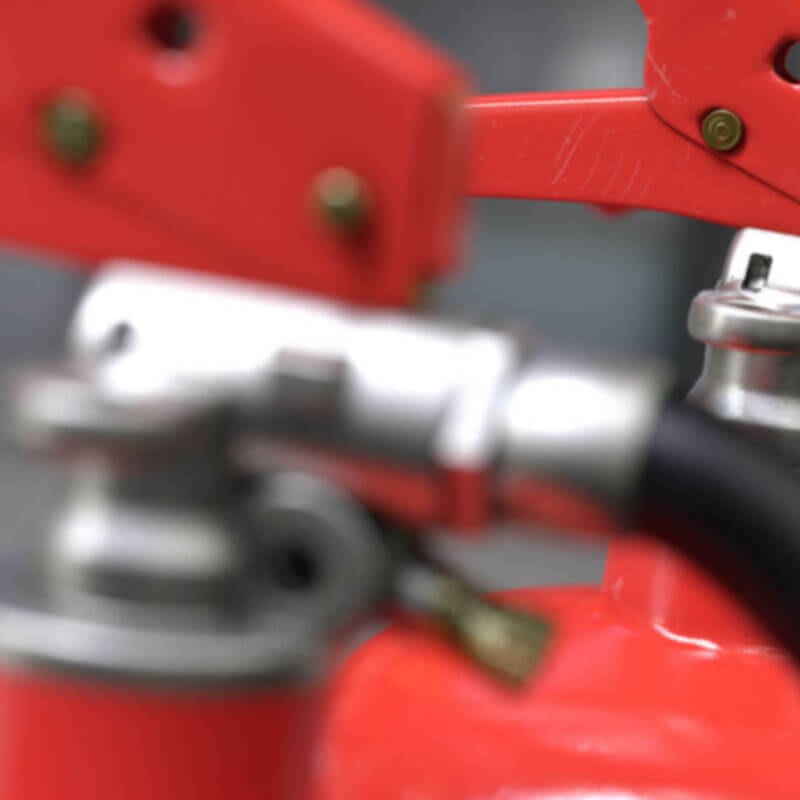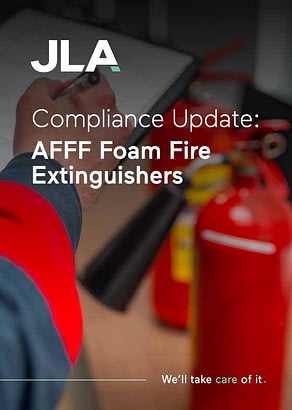Fire extinguishers
Our experts will advise you on the best fire extinguishers for your business along with installation and on-going maintenance.
Why fire extinguishers are important for businesses
A fire extinguisher is an integral piece of life saving equipment and can prevent a small fire from spreading into a major incident, which could destroy your business.

The legal requirements
The Fire Safety Order 2005 states that appropriate fire-fighting equipment, including portable fire extinguishers, must be provided where there is any risk of fire, meaning that it isn’t just a guidance to include fire extinguishers on your premise, but a legal requirement.

How do I know which type of fire extinguisher I need?
With over 100 years of collective experience in fire solutions, we work with our clients to ensure the fire extinguishers fitted are right for their requirements. All of our extinguishers are manufactured to BS EN3 standard and carry a CE mark.
How it works
We create the right solution for your business
We look at your specific needs and develop the right commercial fire safety and security solutions for your business.
JLA Total Care gives you all the fire safety and security equipment you need in one all-inclusive plan, including design, installation, maintenance and repairs for a simple monthly subscription payment.
Whatever the job calls for we’ll take care of it.
Assess
Install
Maintain
Compliance Update: AFFF foam fire extinguishers
- A full clarification of which extinguishers are banned.
- Evaluating the future of C6 extinguishers.
- The reasons why certain extinguishers have ben removed in the UK.
- How you can keep compliant with your fire extinguishers.
Trusted partner to over 25,000 businesses





Fire extinguisher FAQs
Fires are classified into different groups, depending on what materials are involved and the multiple fire extinguishers available are designed specifically to tackle particular types of fire.
Below gives you a guide to each class of fire:
- Class A – solid materials (i.e. paper, fabrics and wood)
- Class B – flammable liquids (i.e. alcohol, paint and petrol)
- Class C – involve gases (i.e. methane)
- Class D – involve metals (i.e. metal shavings)
- Class F – involve cooking oils (i.e. deep-fat fryers)
Fires involving electrical appliances are also important to consider, although they are not categorised into a specific class.
- Foam (for Class A and Class B fires)
- Carbon dioxide (Class B and electrical based fires)
- Water (only to be used on Class A fires)
- Dry powder (Fires in Classes A, B and C)
- Wet chemical (Class F – typically in kitchen equipment areas)
Failure to protect staff by providing appropriate equipment could lead to prosecution and refusal of insurance pay-outs, apart from injury and loss of life.
As such, a designated responsible person is legally required to carry out a fire risk assessment and implement and maintain a fire plan.
From surveying your premises and providing the correct extinguishers in the right locations, through to maintaining and upgrading your extinguishers on a regular basis, our team of fully qualified engineers can help ensure your business remains compliant and that your staff have the opportunity to respond and prevent small fires from spreading.
We can also provide fire risk training to ensure your team feel confident to prevent, manage and respond to a fire.
All fire extinguishers must be accessible and visible, but it is not essential for all fire extinguishers to be placed by a door.
Many water-based or CO2 fire extinguishers are placed by doors due to their necessity to be located near to emergency exits. They should be fixed to a wall by bracket, or placed on a heavy floor-stand where a wall mount isn’t suitable.
Specialist extinguishers for use in commercial kitchens for example will have different requirements to ensure they are accessible to the nearest fire hazard. Our specialist team is able to advise on what fire extinguishers your commercial premises require, and where they should be located.
Get my quote
By clicking Get my quote, you agree to the Terms and Conditions set out by this site, including our Privacy Policy
